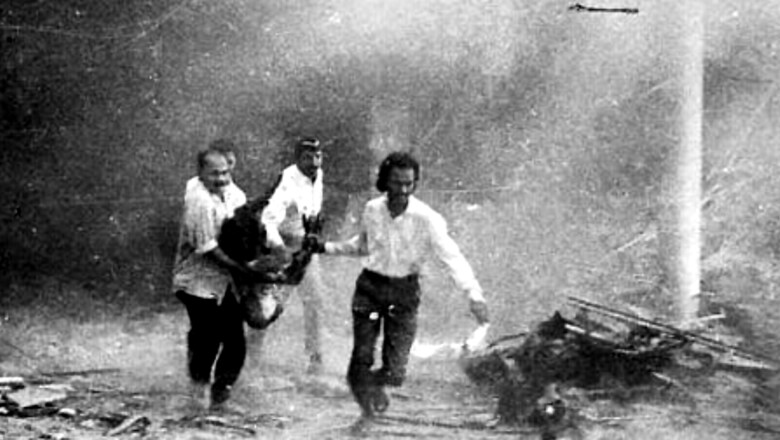
views
As reports of a suspicious boat with guns, bullets, and explosives being found off the Raigad coast in Maharashtra emerged on Thursday, a familiar fear coursed through the district and neighbouring areas, including Mumbai.
On March 12, 1993, a series of bomb blasts brought India’s financial capital, then known as Bombay, to a wailing stop. Twelve bombs went off within a span of two hours and ten minutes that rocked several parts of the city, killing over 250 people.
The explosions were the first large-scale coordinated terror attack to be carried out in the world and were the first terror attack where RDX was used as an explosive.
Between 1:29 pm and 3:40 pm, a series of well-planned blasts ripped through the commercial and most crowded spots across the city.
An over 150-member team of the Mumbai police force cracked the case within 48 hours. Set up under the order of Rakesh Maria, the then deputy commissioner of police, they discovered an abandoned scooter in Mahim. It contained RDX that did not explode and a Maruti van stuffed with grenades and weapons.
Huge quantities of arms and ammunition had been smuggled into Mumbai during two arms landings by Dawood Ibrahim, Tiger Memon, and Mohammed Dossa’s smuggling network. The two landings took place in January and February 1993 at the Shekhadi, and Dighi jetties in Shrivardhan tehsil of Raigad district, investigations showed later.
In total, about 2,313 kgs of RDX, 1132 kgs of gelatine, 63 AK-56 rifles, 496 hand-grenades, and 39,000 rounds of live rounds of AK-56, and 9mm were seized in 33 different cases in Mumbai, Thane, and Raigad by the police.
The blasts had been triggered by bombs loaded with RDX strapped onto scooters, hidden in suitcases abandoned in public spaces and buildings, and buried into cavities created in cars. All activated by a timer, from fifteen to thirty minutes difference.
The serial blasts were conspired by underworld kingpin Dawood Ibrahim who set off a fresh round of ferocity against the Hindu community.
The original plan was to bombard Mumbai in April of 1993 on the occasion of Shiv Jayanti. Among the nineteen men identified by Tiger Memon for arms and bomb-making training, Gul Mohammad Sheikh alias Gullu was picked up for rioting by police on March 9.
Dawood’s younger brother Anees Ibrahim was the chief planner to get RDX onto India’s shores.
The police based on earlier intelligence reports of weapon consignments launched a search in the country. They initially ignored and later hauled suspects which matched the pattern they received. Finally, two suspects who turned approvers and spilled beans with minute details of the planning before the Mumbai police walked free in 2007.
Gullu confessed about a conspiracy underway to blast major locations around the city. However, the police laughed it off and dismissed his claims. It was Gullu’s arrest that provoked Tiger Memon to advance the bombing date to March 12.
In June 2017, a special court held six accused guilty for the explosions.
Deported from Portugal, Abu Salem was accused of carrying and distributing arms and ammunition. Extradited from the United Arab Emirates, Mustafa Dossa was charged for landing arms and explosives. He was accused of conspiracy and directing individuals to Pakistan for their training.
Tahir Merchant was found guilty of arranging for the other offenders to travel to Pakistan. Riyaz Siddiqui faced charges of shipping explosives in a van which were later found to be part of the blasts. Firoz Abdul Rashid Khan was present when ammunition was transported to Mumbai, hence charged. Karimullah Sheikh smuggled arms into the country in February 1993 through the Shekhadi coast of Raigad district.
Read the Latest News and Breaking News here


















Comments
0 comment